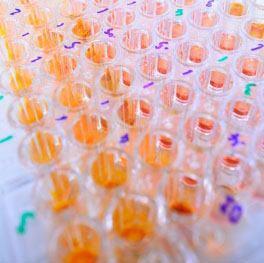Antibiotics are natural or semi-synthetic agents which kill bacteria and other microbes at small doses.
The number of antibiotics used in the present health care system is many, yet not all of them are suitable for every kind of infection.
For example, rifampicin is best for treating tuberculous infection, while penicillin is best for syphilis.
But these two antibiotics are entirely ineffective in vice verse manner.
This knowledge of the selectivity of an antibiotic to eradicate a specific bacteria is essential for effective antimicrobial therapy.
Antibiotic sensitivity test

An antibiotic sensitivity test is a procedure done to identify the susceptibility of a microbe to a suitable antibiotic.
This is determined by the extent of inhibition of growth of a specific microbe when treated with a set of antibiotics.
The antibiotic which inhibits the growth to a large (greater) extent is concluded to be the best one to treat the infection by the said microbe.
This antibiotic sensitivity test is done by two methods.
- Agar Plate method
- Dilution methods
Agar plate methods
- Here, the nutrient agar is used as a substrate for the growth of microbes involved in the test for antibiotic sensitivity.
- The microbe culture is uniformly spread on the surface of nutrient agar.
- Then filter paper disks of 1 cm radius are dipped in different antibiotic solutions and placed over the surface of inoculated agar in the plate.
- The plate is then incubated at a suitable temperature like 25 degrees for a week and checked for the growth of microbe around the paper disks.
- The paper around which there is maximal inhibition of growth of microbe is said to have maximum effect on the microbe growth.
- This antibiotic is suitable to treat the infection by the microbe in humans and/or animals.
Dilution methods
- Here liquid nutrient media is used to dilute the microbial culture in suitable cylindrical tubes like test tubes.
- The same dilution of microbes is present in all tubes.
- Then the fixed concentrations of different antibiotics are added to each tube with microbial culture by labelling them.
- After a week of incubation, the growth in each tube is measured in terms of the turbidity of the solution.
- The tube with less turbidity indicates effective growth inhibition of microbe by the antibiotic.
Antibiotic sensitivity test procedure is suitable for our study
antibiotic sencityvity test